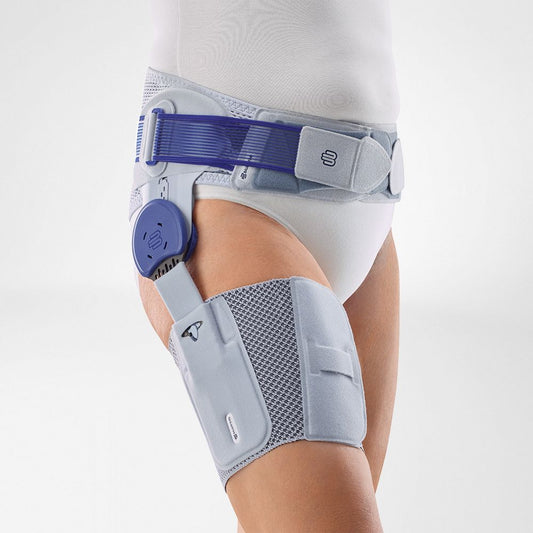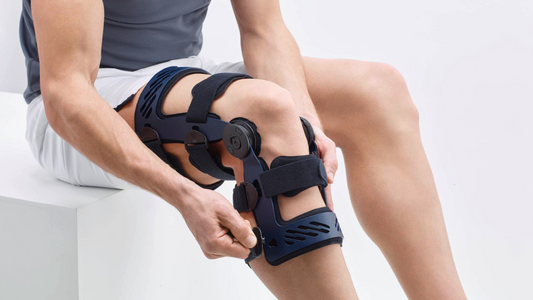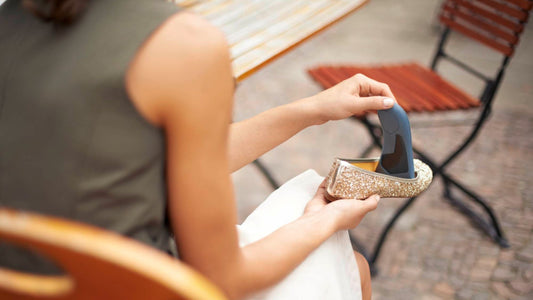Introduction
The labrum is a ring of cartilage that cushions the hip joint and suctions the femur to the socket. It also helps keep synovial fluid within the articular cartilage, distributing some of the load to fluid pressurisation and preventing contact between the femur and the acetabular articular cartilage. As this piece of tissue is essential for adequate hip joint mechanics, lubrication, and health, preserving it and its function as a suction seal is mandatory to keep the hip stable and delay the potential development of joint degeneration.
As our understandings of soft tissue repair continue to shift, surgical vs conservative treatment is contested in dozens of joint pathologies. Patients with hip labral tears are often referred for surgical interventions, such as debridement and autografts. While these techniques are ideal for some instances, current research suggests that a conservative first approach is best. In fact, one study found that its participants—all patients who qualified for hip surgery—showed improvement from a conservative approach.
Understanding Hip Labral Tears
Hip labrum tears often present with anterior groin pain, but the pain may also refer to the buttock, greater trochanter, thigh, and medial knee. This pain often worsens with prolonged standing, walking, sitting, and athletic activity periods. Other symptoms include clicking, locking, catching, instability, and stiffness. The duration and onset of symptoms are highly variable, with some studies reporting up to 70% of patients being asymptomatic.
Hip labrum tears stem from acute injury, repetitive strain, or abnormal morphology. Acute injury cases are commonly attributed to trauma from car accidents, falls, and contact sports such as rugby and ice hockey. Additionally, sports requiring a lot of twisting, repetitive motion, and pivoting (such as golf, ballet, netball, and long-distance running) may damage the labrum over time, compromising the structure and eventually leading to a tear.
Birth defects and medical conditions like hip dysplasia, capsular laxity, joint hypermobility (eg, from EDS), and femoroacetabular impingement can also contribute to labrum malformation and deterioration.
Surgery vs conservative treatment
Unfortunately, there is currently no consensus on which patients will benefit from conservative treatment and which should progress to surgery.
Conservative care and surgery are not necessarily better than each other, and each approach has its own benefits for specific cases. However, current research does demonstrate that a conservative approach can help certain patients avoid surgery and even improve outcomes after surgery.
However, it’s important to note that once a hip labrum tear forms, it has a very low capacity for healing. The labrum is avascular, relying on a blood and nutrient supply from surrounding vascular tissues and synovial fluid. Where some surgeries aim to repair the labrum, conservative approaches focus on reducing symptoms, improving function, and—should the patient progress to surgery—enhancing surgical outcomes.
Surgical options
Today, surgeons typically treat hip labral tears through debridement, repair, reconstruction, or augmentation.
- Repair: surgeons cut into the labrum to affix an anchor point and reattach the labrum to the socket.
- Debridement: Surgeons use a minimally invasive arthroscopic technique to cut away loose labrum parts to prevent them from getting stuck in the socket. This procedure is typically reserved for older patients and for tears that can’t be repaired.
- Labral reconstruction and augmentation: In this procedure, a surgeon performs an autograft or allograft to repair the labrum.
Repair is typically the surgery of choice, with other options reserved for cases of revision or for specific groups of patients. For example, labral reconstruction and augmentation - where an auto or allograft is carried out - is typically only used for cases where the labrum is severely damaged or absent, and thus doesn’t qualify for repair.
However, surgical intervention does carry risks, including those associated with general anaesthesia, infection, and nerve damage. The risks often compound with low-volume surgeons due to less experience in hip preservation, a lack of sufficient equipment, and less experience with complex pathologies.
Conservative management approaches
Conservative approaches aim to strengthen and mobilise the hip to protect the tear and reduce pain. One study found that participants with greater strength and flexibility during a squat test were significantly less likely to have pain from their hip labrum tears than those with weak hips.
One study showing good conservative management results recommends a physical therapy program that aims to improve muscle activation, strength, and flexibility in the quads, hamstrings, gluteus maximus and medius, intrinsic hip lateral rotators, and abdominal muscles.
In completing the program, the patient will ideally improve hip movement precision and avoid hyperextension, dominance of the hamstrings or quads, and rotation of the acetabulum on the head of the femur when under load.
- Standing hip abduction
- Single-leg bridge
- Planks and side planks
- Step ups
- Active knee extensions
- Prone knee extension isometrics at 60-degree knee flexion
- Wall squats (vertical trunk and positive tibial angle as comfort allows)
- Hamstring curls
- Lateral band walks
- Bent knee fallouts progressing to light band resistance
- Prone hip ER isometrics
- Proprioception training in double limb stance (BOSU, wobble board)
Physiotherapists should also recommend activity modifications to avoid damaging movements. Certain patients may also benefit from intraarticular injections and anti-inflammatory pain medication.
Bracing for hip labrum tears
While PT is essential for improving functional outcomes, some studies show that bracing can improve them. According to a study in the Clinical Journal of Sports Medicine, participants in the group combining physical therapy with bracing showed better results than patients in the PT group alone in terms of hip health QoL, pain, symptoms, and function.
To that end, the CoxaTrain can be an excellent option for patients undergoing conservative therapy. According to one non-interventional study on patients with OA, bursitis, and hip impingement, patients reported:
- Perceived pain reduced by 48%
- Improved stability on loose ground by 59% and when standing by 36%
- Increased mobility by 71% and significantly longer walking distance without pain
In another study on patients with hip OA, the CoxaTrain improved walking speed and stride length. Patients also reported that pain at night was reduced by 17.8%, and pain while walking by 28.6%
The CoxaTrain achieves these results through a combination of unique and patented features, including:
- Tool-free setting of the joint splint to suit your patient’s anatomy
- Height-adjustable thigh support above the joint splint
- Compression knit to stimulate the muscles and improve proprioception
- Gluteal pad to massage trigger points
- SI pads to relieve tension and pain
- Trochanter pad to relieve the joint
- Limiter pins in case immobilisation is needed
- 6 pelvis sizes, 3 thigh sizes per leg, 2 length sizes (under 170 cm and over)
The anatomic, lightweight, and highly adjustable design also ensures a high degree of patient compliance.
Conclusion
Hip labrum tears are a complicated condition. As they affect avascular cartilage and have highly variable symptoms and progression, there is currently no consensus on whether conservative management is better than surgery or on which patients will benefit from surgery. However, current research seems to suggest that a conservative-first treatment approach is best, with surgical patients experiencing better surgical outcomes stemming from improved strength and ROM, and others avoiding surgery altogether.












